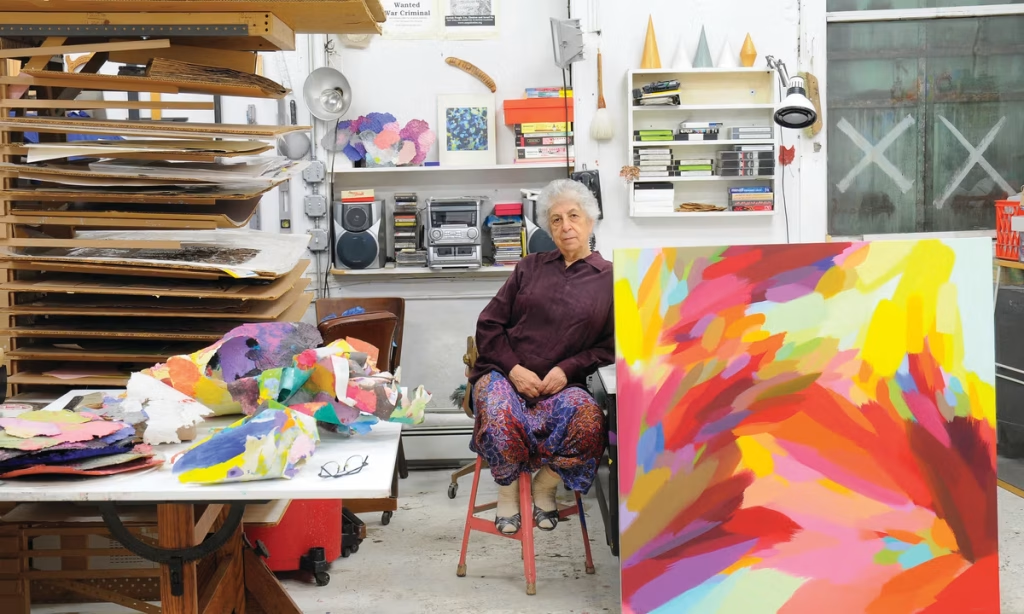“I promote optimism,” says the US-based Palestinian artist Samia Halaby, who is showing on the Sfeir-Semler Gallery stand at Frieze Masters, “especially for young people: Palestinians or Westerners or American youth of Latin origin who are undergoing terrorising conditions that can really derail the heart’s ambitions.”
Halaby, whose solo stand is in the Studio section of the fair, hit the headlines last year when her retrospective at the Indiana University at Bloomington’s Eskenazi Museum of Art was abruptly cancelled. According to The New York Times, “the director informed [the artist] that employees had shared concern about her social media posts on the Israel-Gaza war, where she had expressed support for Palestinian causes and outrage at the violence in the Middle East.” In response to the cancellation, Madison Gordon, the artist’s grandniece and trustee of her foundation, launched a petition that had more than 15,000 signatures asking for the show to be reinstated.
The gallery director and founder Andrée Sfeir-Semler notes that the ensuing response to the cancellation was “enormous” and that the gallery has had enquiries about Halaby’s work “every day”. But, she adds, “we want to protect the paintings to place them in museums. And museums are slower than private collectors.” In recent years, Halaby’s work has often wildly surpassed its high estimates at auction and been acquired by major institutions.
Halaby contextualises the experience of the exhibition’s cancellation within the long arc of her career. “That’s one event in my life that’s visible, and there are numerous events in my life almost daily that are invisible. So, to me it is important to focus on what these things are and why they happen.”
The artist explains that when she and her family entered the US in 1951, having been exiled from their own country, she realised immediately that she was being defined as “something other than a young person with things in her heart she wanted to accomplish”.
Though she hates “the fact that there is more attention on Palestinians because of Gaza”, she admits that “at least it gives me an opportunity to talk about Gaza”. Halaby says that despite being shadow-banned on social media, she does not shy away from sharing her views or furthering her activism, having recently created an editioned fundraising poster for the Palestinian Youth Movement, and held a talk and workshop with artists in Gaza as part of the itinerant Gaza Biennale, which opened in New York last month.
It was Halaby’s activism, decades ago, that energised her painting despite her struggle to secure a US gallery. But when asked how Halaby’s outspokenness about Palestine has affected her reception in the art world, Sfeir-Semler says: “All artists are very outspoken and political. We represent these artists because they are outspoken and because they care for human rights and politics.”
